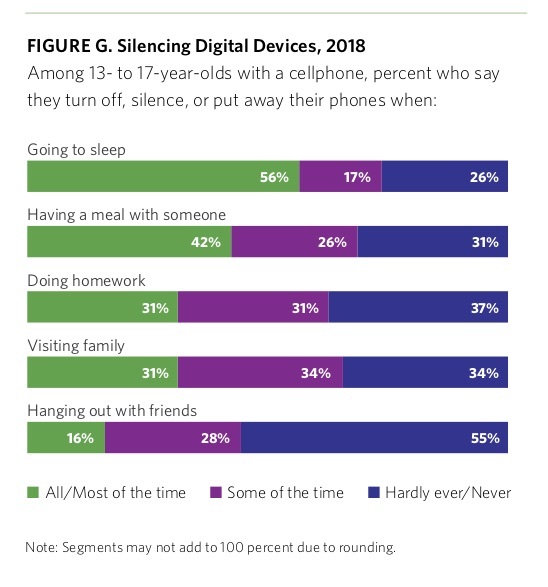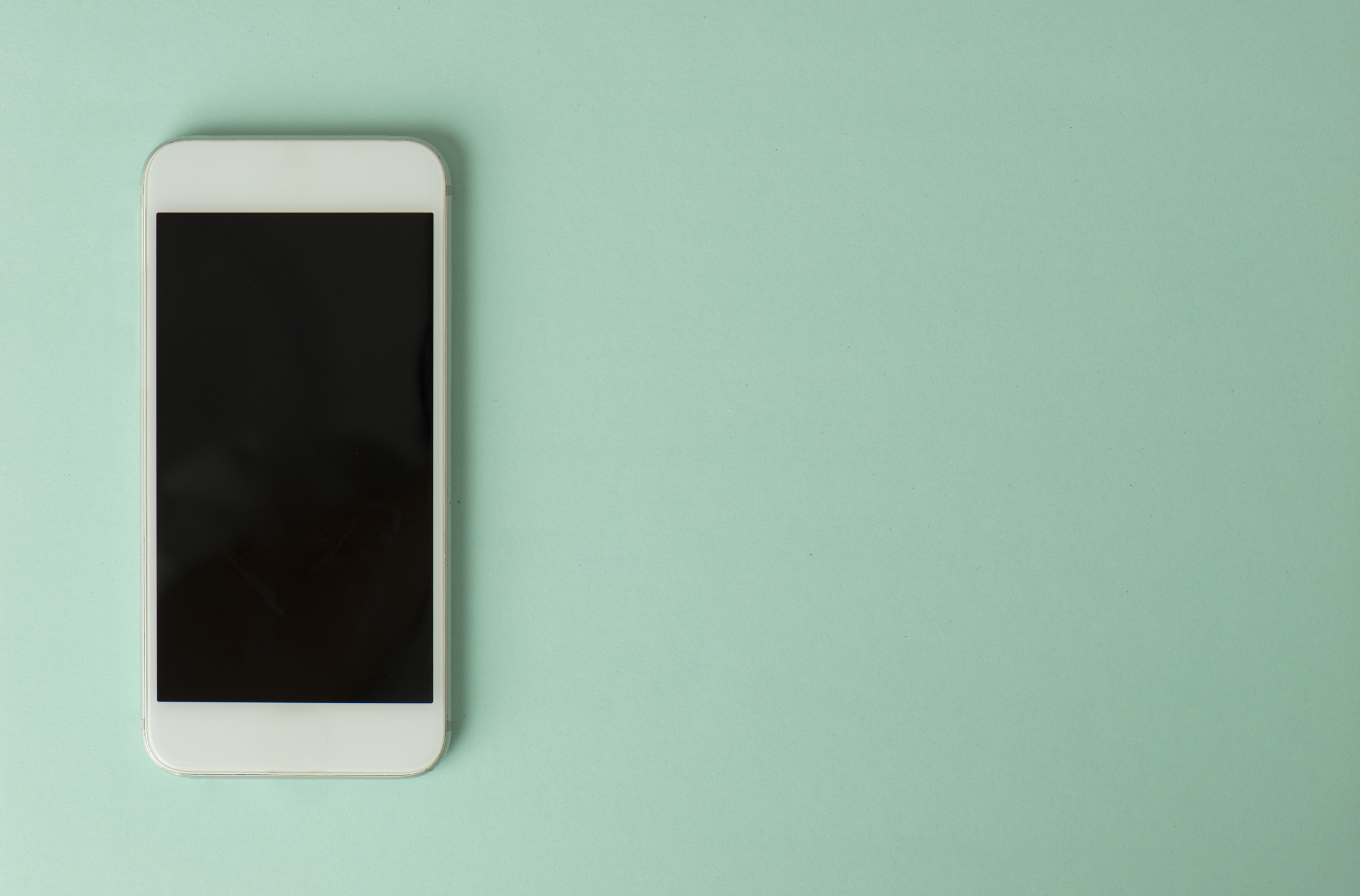Social media platforms are central to every aspect of teens’ lives, from how they stay in touch with friends to how they engage with politics. And constantly refreshing their social feeds can feel simultaneously positive and negative: Teens say social media strengthens their relationships but also distracts them from in-person connection.
Social Media, Social Life: Teens Reveal Their Experiences sheds light on teens’ changing social media habits and why some kids are more deeply affected by — and connected to — their digital worlds. The report is a nationally representative survey of more than 1,000 kids age 13 to 17. And because it tracks changes from 2012 to today, we can see how teens’ social media use continues to evolve. Read the full report and see the key finding below.
1) Social media use among teens has increased dramatically since 2012. A total of 81 percent of teens use social media, roughly the same as “ever” used it in 2012. But it is the frequency of social media use that has changed most dramatically. The proportion of teens who use social media multiple times a day has doubled over the past six years: In 2012, 34 percent of teens used social media more than once a day; today, 70 percent do (see Figure A). In fact, 38 percent of teens today say they use social media multiple times an hour, including 16 percent who say they use it “almost constantly.” The increasing frequency of social media use may be fueled in part by the dramatic increase in access to mobile devices: The proportion of teens with a smartphone has more than doubled since 2012, from 41 percent up to 89 percent. Even among 13- to 14-year-olds, 84 percent now have a smartphone, and 93 percent have some type of mobile device such as a tablet. Amid increased social media use, the decline of Facebook has been precipitous. In 2012, 68 percent of all teens listed Facebook as their main social networking site. Today, 15 percent say Facebook is their main site, as compared to 41 percent of all teens who say Snapchat, and 22 percent who say Instagram (which is owned by Facebook). (When one 16-year-old girl was asked in a focus group whom she communicates with on Facebook, she replied, “My grandparents”).

2) Only a very few teens say that using social media has a negative effect on how they feel about themselves; many more say it has a positive effect. Across every measure in our survey, teens are more likely to say that social media has a positive rather than a negative effect on how they feel (see Figure B). For example, 25 percent say using social media makes them feel less lonely, compared to 3 percentwho say more; eighteen percent say using social media makes them feel better about themselves, compared to 4 percent who say worse; and 16 percent say social media use makes them feel less depressed, compared to 3 percent who say more. (The rest say using social media doesn’t make much of a difference one way or the other.) Despite the increased use of social media that has occurred over the past six years, teens are no more likely to report having a negative reaction to social media on any of these measures today than they were in 2012.
3) Social media has a heightened role— both positive and negative—in the lives of more vulnerable teens. The survey included a social-emotional well-being (SEWB) scale based on concepts such as happiness, depression, loneliness, confidence, self-esteem, and parental relations (see the “Methodology” section, on page 21, for more details). About one in five teens (19 percent) is in the “high SEWB” group, 63 percent in the “medium” group, and 17 percent in the “low” group. Social media is significantly more important in the lives of those who are lowest on the SEWB scale. Nearly half(46 percent) of teen social media users at the low end of the SEWB scale say social media is “extremely” or “very” important in their lives, compared to 32 percent of those at the high end of the scale. Teen social media users on the low end of the scale are also much more likely to say they’ve had a variety of negative responses to social media (see Figure C), such as feeling bad about themselves when nobody comments on or likes their posts (43 percent agree “strongly” or “somewhat,” vs. 11 percent of high-SEWB teens); feeling left out or excluded after seeing photos on social media of their friends together at something they weren’t invited to (70 percent vs. 29 percent); and deleting social media posts because they didn’t get enough likes (43 percent vs. 13 percent). Disturbingly, more than a third (35 percent) say they have been cyberbullied, compared to 5 percent of high-SEWB teens. But these more-vulnerable teens are also more likely to say that social media has a positive rather than a negative effect on them. (see Figure D.) For example, 29 percent of them say using social media makes them feel less depressed, compared to 11 percent who say it makes them feel more depressed (the rest say it doesn’t make a difference one way or the other); twenty-two percent say social media makes them feel better about themselves, compared to 15 percent who say worse; and 39 percent say using social media makes them feel less lonely, compared to 13 percent who say it makes them feel more lonely. Despite the increased use of social media among teens between 2012 and 2018, there has been no increase in the proportion of these more vulnerable youth who say they feel negative effects from their social media use; but there has been an increase in the proportion who report a positive effect (see Figure E). For example, in 2012, 11 percent of low-SEWB teens said using social media made them feel less depressed; today, 29 percent say it makes them feel less depressed. In other words, it is possible that the beneficial effects of social media, for vulnerable teens, have increased over the past six years.
4) Teens’ preference for face-to-face communication with friends has declined substantially, and their perception of social media’s interference with personal interactions has increased. The proportion of teens who say their favorite way to communicate with their friends is “in person” has dropped from nearly half (49 percent) in 2012 (when it was their top choice) to less than a third (32 percent) today (when it’s a close second to texting) (see Figure F). And teens are more likely to say they’re distracted from personal relationships by social media today than they were in 2012: Fifty-four percent of teens agree that using social media “often distracts me when I should be paying attention to the people I’m with,” up from 44 percent in 2012; and 42 percent agree that the time they spend using social media “has taken away from time I could be spending with friends in person,” up from 34 percent six years ago.

5) Many teens think tech companies manipulate users to spend more time on their devices and say that digital distractions interfere with homework, personal relationships, and sleep. Nearly three out of four teens (72 percent) believe that tech companies manipulate users to spend more time on their devices. And many teen social media users say that social media often distracts them from other important things: Fifty-seven percent agree that using social media often distracts them when they should be doing homework, and 54 percent agree that it often distracts them when they should be paying attention to the people they’re with. A large proportion of all teens (44 percent) say they get frustrated with their friends for being on their phones so much when they’re hanging out together. More than two-thirds (68 percent), regardless of whether they use social media themselves, agree with the statement “Social media has a negative impact on many people my age,” including 20 percent who “strongly” agree. Nearly a third who own smartphones (29 percent) say they’ve been woken up by their phones during the night by a call, text, or notification. Many teens say digital obsession is a problem for their parents as well: Fully a third (33 percent) of teens say they wish their parents would spend less time on their devices, up from 21 percent in 2012.
6) Teens have a decidedly mixed record when it comes to self-regulating device use. Many young people turn off, silence, or put away their phones at key times such as when going to sleep (56 percent do so “all” or “most” of the time), having meals with people (42 percent), visiting family (31 percent), or doing homework (31 percent) (see Figure G). But many others do not: A significant number of teens say they “hardly ever” or “never” silence or put away their devices when doing homework (37 percent), visiting family (34 percent), having meals with other people (31 percent), or going to sleep (26 percent).

7) There has been an uptick in teens’ exposure to racist, sexist, and homophobic content on social media, ranging from an increase of 8 to 12 percentage points. All told, nearly two-thirds (64 percent) of teen social media users in 2018 say they “often” or “sometimes” come across racist, sexist, homophobic, or religious-based hate content in social media; one in five (21 percent) say they “often” do so. Over the past six years, there has been an increase in exposure to each individual type of content. For example, the percent who “often” or “sometimes” encounter racist content has increased from 43 percent in 2012 to 52 percent today, and exposure to content that denigrates someone because of their religion grew from 34 percent to 46 percent of teens on social media.
8) Some teens have been cyberbullied, including about one in 10 who say their cyberbullying was at least “somewhat” serious. More than one in 10 teens (13 percent) say they have “ever” been cyberbullied (see the “Methodology” section, on page 21, for a definition), including 9 percent who say this has happened to them either“many” or “a few” times (the rest say “once or twice”) (see Figure H). Similarly, 9 percent of teens say they have been cyberbullied in a way they consider at least “somewhat” serious (the rest say either “not too” or “not at all” serious). More than one in five teens (23 percent) have tried to help someone who has been cyberbullied, such as by talking to the person who was cyberbullied, reporting it to adults, or posting positive stuff about the person being cyberbullied online.

9) Social media is an important avenue of creative expression for many teens. More than one in four teens (27 percent) say social media is “extremely” or “very” important to them for expressing themselves creatively. Using social media for creative expression appears to be especially important to the most vulnerable teen social media users—those lowest on the scale of social-emotional well-being. Thirty-seven percent of those teens say social media is “extremely” or “very” important to them for that purpose, compared to 21 percent of teen social media users who are high in social-emotional well-being. For example, in openended responses to the survey, one 17-year-old white girl wrote that one of the benefits of social media is that she can “get my artwork out to the public”; a 14-year-old African American girl wrote that “[s]ocial media allows me to have a creative outlet to express myself”; a 14-year-old white boy said he likes social media because “I get to share things that I make”; and a 16-yearold Hispanic/Latino boy wrote that he likes using social media because “I get to post my costume and design work.”



